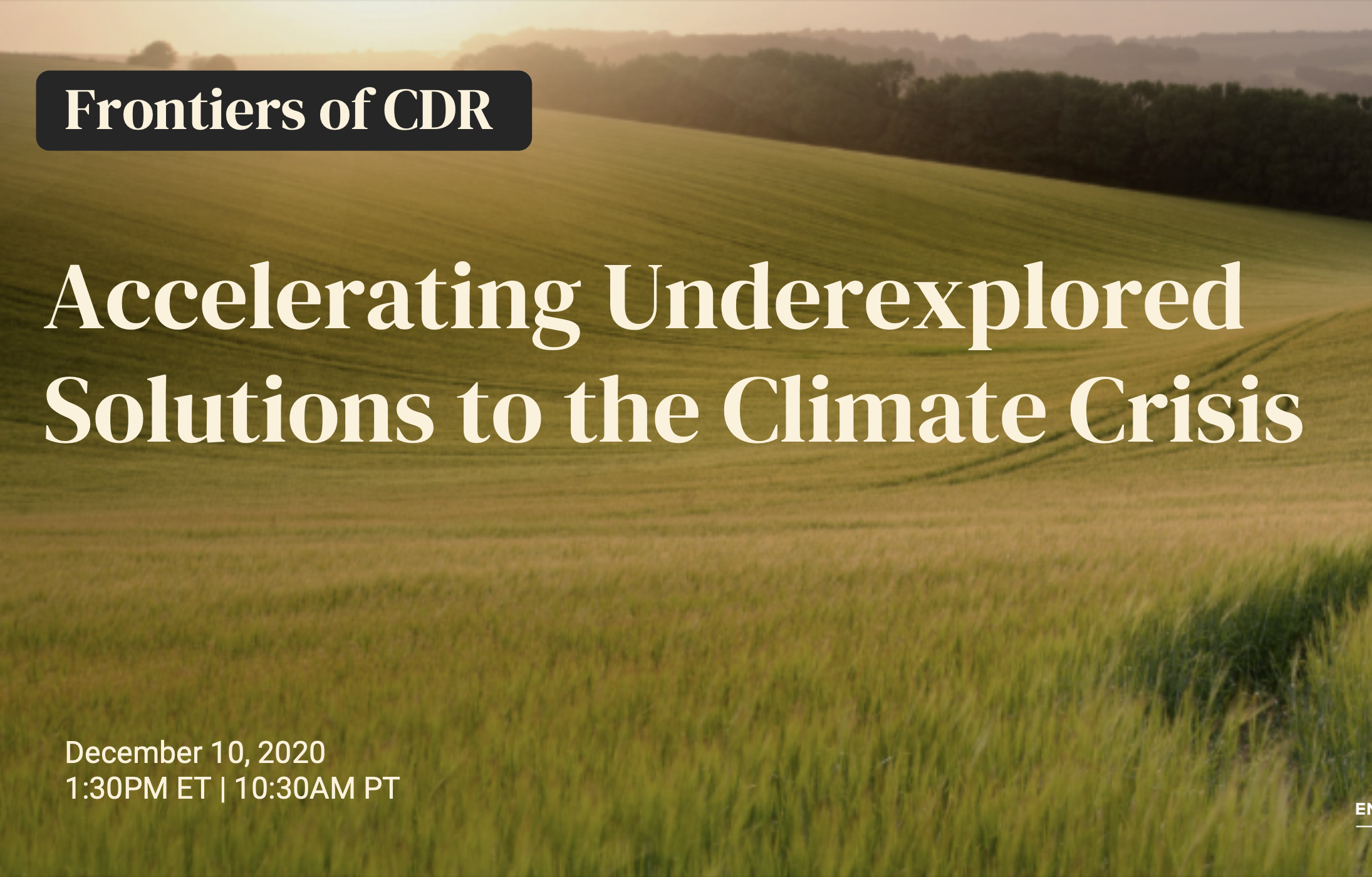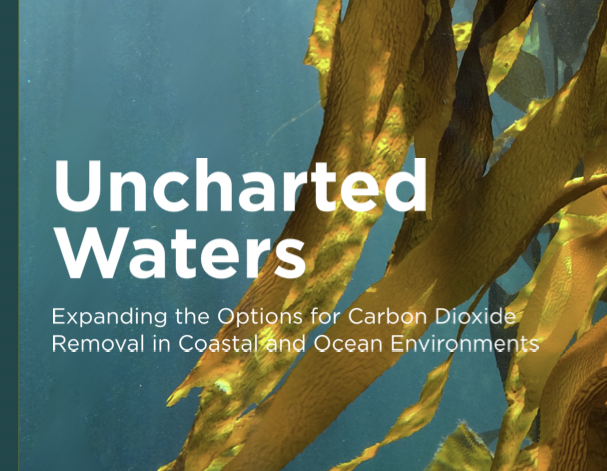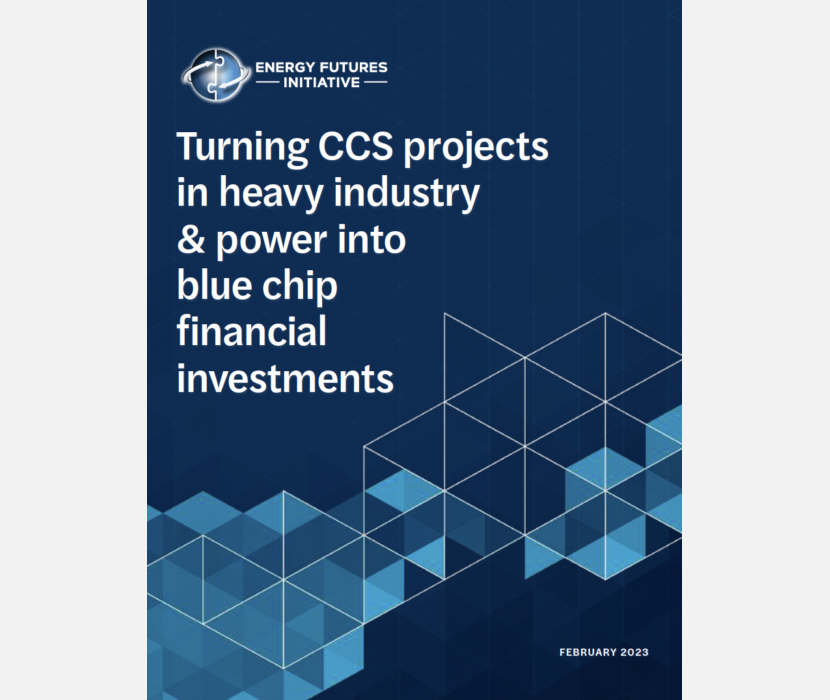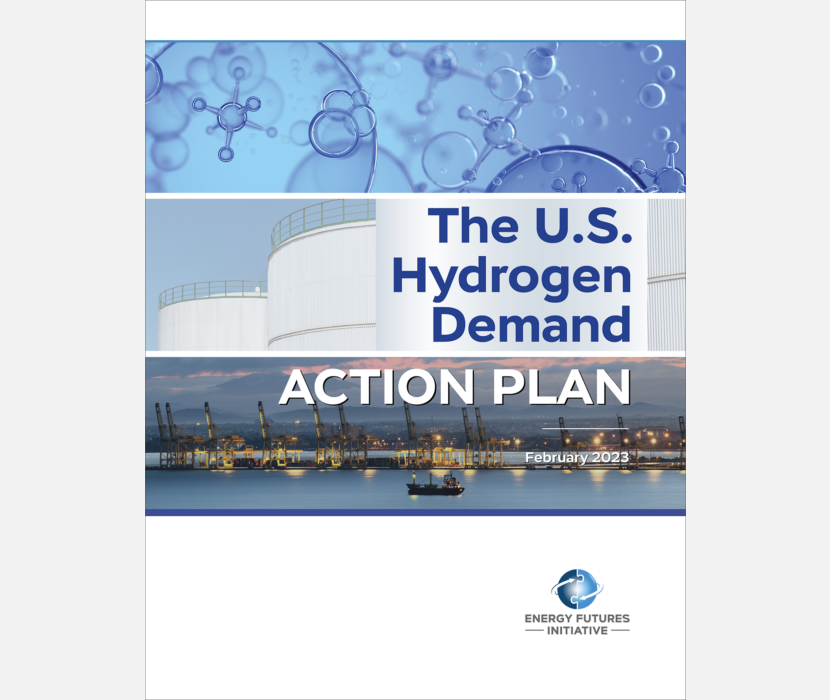Rock Solid: Harnessing Mineralization for Large-Scale Carbon Management (December 2020), is an Energy Futures Initiative (EFI) report that reviews underexplored mineralization carbon dioxide removal (CDR) pathways and issues recommendations for policymakers. It is part of EFI’s three-part “Frontiers of CDR” series, which builds on EFI’s 2019 “Clearing the Air” report and examines critical but underexplored CDR pathways.
Carbon dioxide mineralization is a part of the carbon cycle during which carbon dioxide from the atmosphere is slowly transformed into solid carbonate minerals through rock weathering. Natural mineralization stores carbon in the Earth nearly permanently by removing just over 1 gigaton per year of carbon dioxide from the atmosphere. Prior to the Industrial Revolution, this rate of removal combined with other components of the carbon cycle (e.g., the roles of plants, oceans, and soil) kept the Earth’s climate, biosphere, and atmospheric carbon dioxide concentration stable.
The report identifies two ways that technology can enhance natural carbon mineralization (1) increasing the rate carbon mineralization by a factor of 5 to 10 and (2) increasing the scale. Along with environmental, economic, and sociological co-benefits, technologically enhancing mineralization pathways provide CDR options that help avoid and sometimes reverse challenges for other CDR methods, such as ocean acidification. This report delivers an overview of three above-surface (ex-situ) and four below-surface (in-situ) CDR mineralization pathways:
Ex-situ CDR pathways:
- Carbonation of mineral wastes
- Enhanced rock weathering and carbonation in soils
- Calcium and/or magnesium oxide looping
In-situ CDR pathways:
- Subsurface mineralization in basalt
- Subsurface mineralization in ultramafic rocks
- Sub-seafloor mineralization
- In-situ mineralization for CDR and direct air capture hybrids
With further development in the field, each of these pathways has the scaling potential to achieve cost-effective (less than $100 per ton of carbon dioxide), gigaton-scale CDR. This EFI report recommends broad increased federal investment in carbon mineralization research, development, and demonstration (RD&D) for each of these pathways. The investment should support larger-scale pilot projects and fund regionally sensitive mineralization research, additional analysis and monitoring methods and standards, and revised and updated policy analysis and development to accompany large-scale mineralization CDR deployment.
EFI advises that fundamental research be incorporated into existing federal research and development programs, such as those within the U.S. Department of Energy (Fossil Energy and Advanced Manufacturing), the U.S. Department of Agriculture, and the U.S. Department of the Interior (Office of Surface Mining Reclamation and Enforcement). Further, the report recommends specific lines of research for each pathway that was explored.
This report was published alongside the other two reports in the series, “From the Ground Up” and “Uncharted Waters,” during a webinar launch event. The event featured project leads Aristides Patrinos (Novim), Brad Ack(Ocean Visions), and Sasha Wilson (University of Alberta). The reports attracted media coverage from the Canadian Broadcasting Corporation, Edmonton Journal, OilPrice.com, Australia’s Mirage News, and Cornell University’s Cornell Chronicle.
Webinar Event
Supplemental Material
Related Content
(Share this post with others.)









